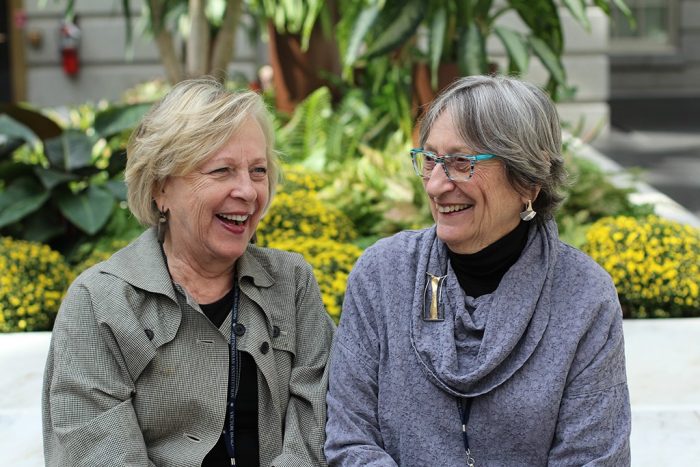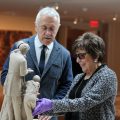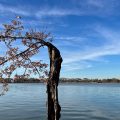A lifetime of volunteering
Every day, nearly 130 volunteer docents at the American Art Museum share their knowledge and love of art with the public through highlights tours, school field trips, outreach, videoconferencing, and more. April is Volunteer Appreciation Month and the perfect time to talk to two of SAAM’s longest serving docents, Phoebe Kline and Susanne Joyner, to hear their reflections on the ways the museum has changed over the course of 40 years and what keeps them engaged and volunteering.
When did you become docents?
Phoebe Kline: I became a docent in 1974.
Susanne Joyner: And I started in 1976.
Over the last 40 years or so that you’ve been docents at the museum, what are some of the biggest changes you’ve seen?
SJ: The Kogod Courtyard is fabulous! The most exciting project I was involved with was when high school students would come in for a four-week print workshop. And at the end of the school year they had an exhibit and an award ceremony here. I still think of that.
PK: We used to have what we called children’s days once a year. It was a big, big deal, and basically docent-run. We had it in the courtyard, and local artists were very happy to spend a day exposing kids to art.
SJ: We worked very hard! We had a lot of responsibilities.
Do either of you have a favorite artwork you show on tours?
SJ: Yes, Hans Hofmann’s Fermented Soil. When it’s on display, it’s my ultimate favorite because it begs the question, “What color is dirt?” I like it because I can get a really great dialogue going about it.
PK: I love the Hugo Robus sculpture, One and Another. I really have so much fun with that piece. After we talk about how the bodies are not really touching and how the negative space is as important as the mass in that piece, we begin to think about why he called it One and Another. And with the kids, I always say, well, you know, we all share one experience, and that is being part of our mother. But once we’re out in the world, we’re a separate being. We’re the other. And maybe that’s what he’s getting at.
What about favorite exhibitions?
SJ: The one I like the best was The West as America.
PK: I really enjoyed Virginia Mecklenburg’s exhibition, Metropolitan Lives, because it brought so many works to us that were classics of the Ashcan School. The 1934 show was great, too. People loved that. A lot of older people remembered that time from their childhood.
SJ: I thought video artist Nam June Paik’s exhibition, Nam June Paik: Global Visionary was a fun show, too.
PK: It was! And I loved The Singing and the Silence! I thought that was a mind-blower. People were just in love with that show.
Is there a particularly memorable experience you’ve had as a docent?
PK: In 1976 there was a retrospective of Robert Rauschenberg. He came to the opening and the museum was crammed with people.
SJ: I saw a woman, I swear she had a dead bird on her forehead, dangling…
PK: Because of his combines, people came to that opening in just incredible outfits.
SJ: It was the craziest show you’ve ever seen. You’re right, Phoebe. And I had just become a docent!
PK: We were both really new to the program. And, man, that made an impression. Probably nothing has made an impression quite like that, except for WONDER. I think WONDER was a fantastic show.
What keeps this job interesting for you?
SJ: The learning.
PK: I think Susanne is right, the opportunity to self-educate is really a great draw. You know, I’d like to be magnanimous, and say, oh, it’s the opportunity to serve the public, but it’s also just plain fun! And we have wonderful people to work with, and it’s interesting to see how curators’ minds work when they put up a new exhibition. And it is always changing.
This is an edited version of a post originally published by the Smithsonian American Art Museum blog, Eye Level.
Posted: 12 April 2017
-
Categories:
American Art Museum , Art and Design , Education, Access & Outreach , Feature Stories









